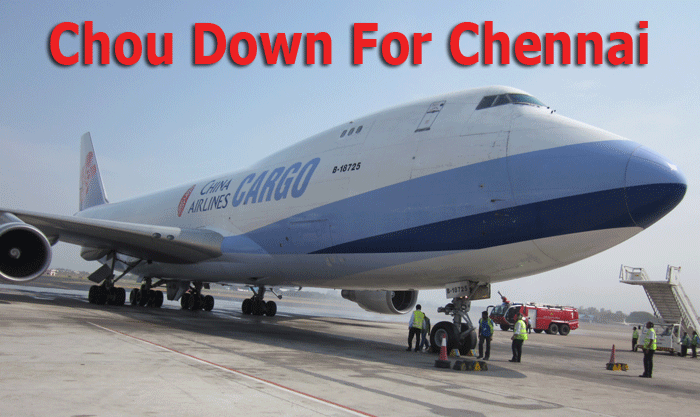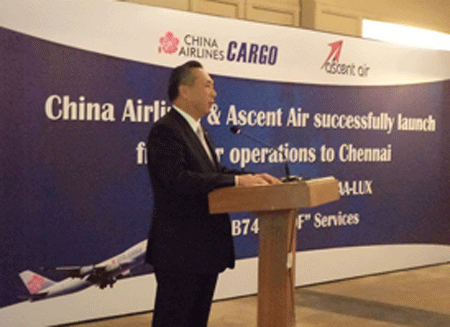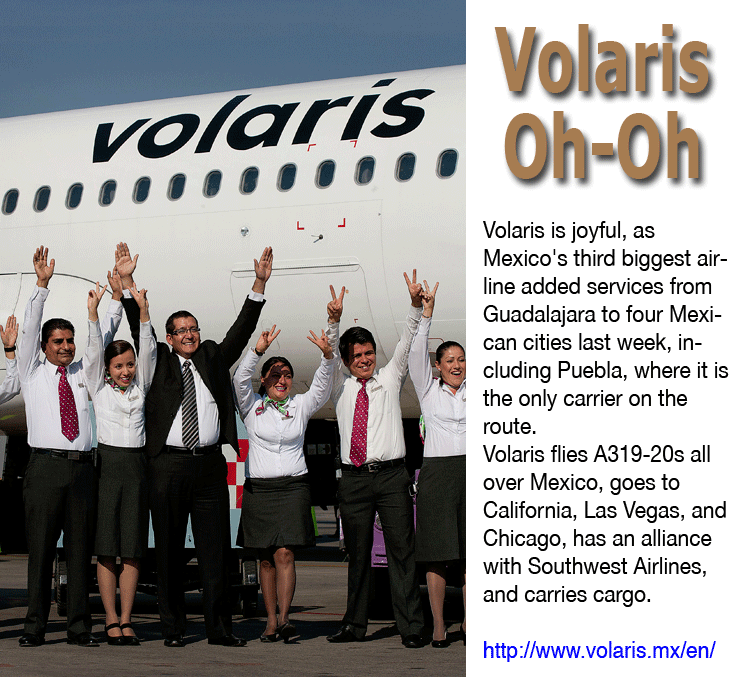
The China Airlines’
B747-400F that debuted at Chennai on May 16 marked the beginning of
the twice-weekly freighter service by Taiwan’s national carrier
on the Taipei-Kuala Lumpur-Chennai-Luxembourg-Taipei route.
The first Luxemburg-bound flight carried
nearly 50 tons of cargo, comprising electronic items, automotive parts
and consumer goods, while the return flight also had electronics in
addition to machinery and components.
Like many carriers, China Airlines is
eager to cash in on the India-China trade. In the year 2010, the volume
of trade between China and India grew to $61.8 billion.
 On
hand to welcome the first China Airlines freighter were a host of senior
staff from China Airlines including Brian Chou, (left) Senior Vice President;
K.K. Wu, Vice President, Sales and Marketing; Paul Hseuh, General Manager,
Cargo Marketing and Planning; and HoJo Chang, Country General Manager,
India. On
hand to welcome the first China Airlines freighter were a host of senior
staff from China Airlines including Brian Chou, (left) Senior Vice President;
K.K. Wu, Vice President, Sales and Marketing; Paul Hseuh, General Manager,
Cargo Marketing and Planning; and HoJo Chang, Country General Manager,
India.
It was amply clear that the carrier’s
management was keen to ensure the success of the Chennai connection.
Among others who were at the launch of
the China Airlines services were distinguished visitors from the expatriate
community, among them David Hsu, Economic Counselor and Director, Taipei
Economic and Cultural Centre; George Lin, Director, Taipei World Trade
Centre; and Keng Lee, Director, Institute of Information Industry. Hsu
was quick to point out that Taiwan had built up a significant level
of investment in India despite very few Taiwanese actually residing
here.
Just a few months ago—in March of
this year—China Airlines withdrew its Delhi services. With a freighter
fleet of 21 aircraft, the $3.5 billion airline had to stop its freighter
services to the Indian capital due to poor volumes, although it continued
to carry belly cargo in its regular passenger flights coming from Taipei.
Commented Brian Chou:
“In the past, Delhi was the hub
for us. However, today it is Chennai, which has emerged as a strong
hub due to the presence of large manufacturing units, including mobile
phones. The new route via Chennai is very valuable for us. If the volume
increases, the airline might consider having three services in a week
to Chennai,” he added.
For Chennai Airport Director E. P. Hareendranath,
the China Airlines services were an indication that the recently revamped
metro airport operated by the Airports Authority of India was being
noticed. Hareendranath pointed out that
“this freighter service to Chennai from Taipei is mainly to cater
to the growing air shipment in electronic items to the city from Taiwan
and mainland China.”
Early indicators point out that the Chennai
touchdowns augur well for China Airlines. Said Chou, “The allocation
from Chennai was 40 metric tonnes on each flight. The export’s
focus would be primarily on electronics, mobiles, pharmaceuticals, leather,
textiles, etc. The imports into Chennai would mainly consist of electronics
goods.” He went on to add: “This service will provide shippers
more choices for cargo in/out of India and decrease cargo transit time
between East Asia to India, as well as India to Europe.”
In India’s burgeoning cargo market,
Chennai occupies the third position, trailing behind Delhi and Mumbai
in annual shipment volumes. However, in terms of shipment growth, Chennai
International Airport is the country’s fastest-growing airport
for exports and imports, predominantly comprising electronics, automotive
parts, textile products and ready-made clothes, and leather products.
Chennai Airport handled 19,843 tonnes
of cargo in the month of February this year. Of the 8,321 tonnes of
import cargo, 3,131 tonnes comprised electronics/electrical items. Exports
were to the tune of 11,523 tonnes. A substantial portion of electronic
components come from Taiwan and mainland China to serve the needs of
companies located in areas such as the electronic manufacturing hub
of Sriperumbudur.
The initiative highlights the importance
that is being attached to the South Indian city as a cargo hub. The
airport has been receiving 36 freighters in a month and China Airlines
is not the only carrier that was keen to land in the city. In the middle
of March this year, a B747-400 cargo aircraft of Air China Cargo Company
landed in Chennai from Shanghai’s Pu Dong International Airport.
That was the first cargo aircraft route to South Asia and Southeast
Asia launched by Air China Cargo.
The operation of the freighters has enhanced
the transport capacity of Air China Cargo into the Asia Pacific market
while linking the two important industrial cities of Chennai and Chongqing
with North America, Europe, Japan, and Asia Pacific destinations using
the Shanghai hub.
The entry of China Airlines and Air China
Cargo comes at a very crucial juncture. A number of carriers have been
interested in enhancing flights to the country’s southern cities.
Cathay Pacific cargo, for example, has recently started services to
nearby Hyderabad after starting freighter flights from Bengaluru last
year.
ACC started the services to Chennai as
a part of its plan to fill some of its new main-deck capacity. It obtained
approval for the Shanghai-Chennai sector and aimed to fly the route
three days a week. Titus Diu, Air China Cargo’s COO, was quoted
saying that ACC had planned to send the Chennai flight to Chongqing.
Indeed, the return leg of the flight from India to Shanghai does touch
Chonqing.
“We can carry cargo from India,
plus we can feed traffic from Chongqing to our intercontinental departures
out of Shanghai,” Diu said. Elsewhere in Asia, ACC has been ooking
at Dhaka, Singapore, and Ho Chi Minh City. |



